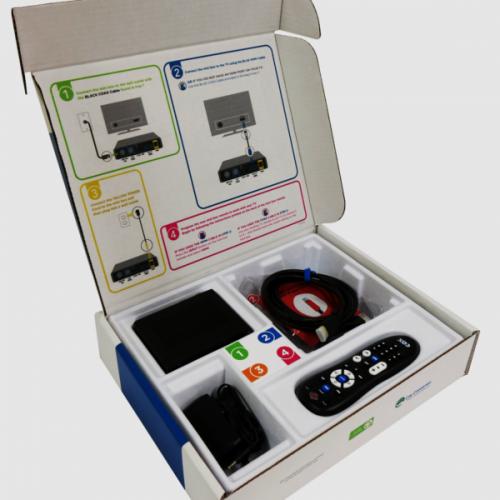Manufacturing of the Special Electronic Corrugated Packing Boxes - Paper Gallery

At Papers Gallery, Manufacturing special electronic corrugated packing boxes involves several key steps to ensure the boxes are durable, protective, and suitable for shipping electronic goods. Here's an overview of the process: - Customized Printed Packaging Boxes, Electronics Product Boxes, Packaging
1. Material Selection
The primary material for these boxes is corrugated cardboard, chosen for its strength and cushioning properties. There are different types of corrugated cardboard, categorized by the number of layers and the type of flute:
Single Wall: One layer of corrugation between two linerboards.
Double Wall: Two layers of corrugation between three linerboards.
Triple Wall: Three layers of corrugation between four linerboards.
For electronic packaging, double or triple wall corrugated cardboard is often preferred for extra protection.
2. Design and Prototyping
Designing the box involves creating a layout that will securely hold the electronic product. This includes:
Custom Die-Cutting: Creating a die to cut the cardboard into precise shapes and sizes.
CAD Software: Using computer-aided design (CAD) software to design the box and make adjustments as needed.
Prototyping: Producing a prototype to test the fit and protection of the electronic product.
3. Printing and Branding
Corrugated boxes can be printed with branding, instructions, and handling information:
Flexographic Printing: Commonly used for high-volume printing on corrugated boxes.
Digital Printing: Suitable for smaller runs and more complex designs.
4. Cutting and Creasing
The cardboard sheets are cut and creased using the custom die. Creasing creates fold lines for easy assembly.
5. Slotting
Slots are cut into the cardboard to form flaps for the top and bottom of the box.
6. Folding and Gluing
The cut and creased sheets are folded into shape and glued together to form the box. This can be done manually or using automated machinery for higher efficiency.
7. Quality Control
Each box is inspected to ensure it meets quality standards. This includes checking for:
Proper dimensions and alignment.
Strength and durability of the material.
Print quality and accuracy.
8. Additional Features
For electronic packaging, additional features might be included:
Anti-Static Liners: To protect electronic components from static electricity.
Foam Inserts: Custom-cut foam inserts to hold the electronic items securely in place.
Tamper-Evident Seals: For added security during shipping.
9. Packing and Shipping
Finally, the finished boxes are packed flat and shipped to the client for assembly and use.
Environmental Considerations
Manufacturers also consider environmental impacts, often opting for:
Recycled Materials: Using recycled cardboard to reduce waste.
Sustainable Practices: Implementing eco-friendly practices throughout the manufacturing process.
Example of a Manufacturing Process
Here’s a hypothetical example of a production line for electronic corrugated packing boxes:
Material Preparation: Rolls of corrugated cardboard are loaded onto the production line.
Printing: The cardboard passes through a flexographic printer for branding.
Die-Cutting and Creasing: Custom dies cut and crease the cardboard into the required shapes and sizes.
Slotting: Slots are cut to form flaps.
Folding and Gluing: The box is folded and glued together.
Quality Control: Each box is inspected for defects.
Packing: Finished boxes are packed and prepared for shipping.
This process ensures the production of high-quality, durable, and protective corrugated packing boxes suitable for electronic products. - Download PDF


Comments